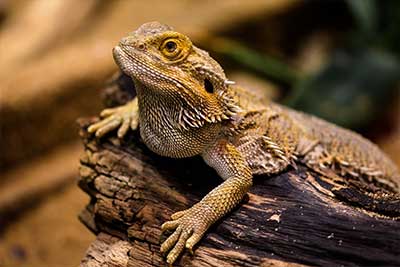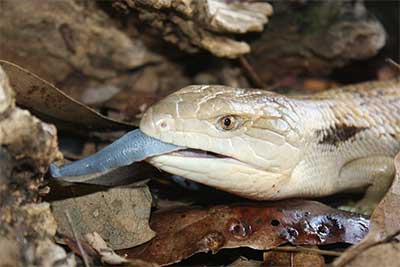
REPTILES & LIZARDS AS PETS
 In Australia all reptile pets must have been bred in captivity by a licensed supplier or keeper. It is illegal to capture reptiles from the wild to keep them as pets. All native reptiles are protected and the welfare of all animals, including amphibians, is protected by the Prevention of Cruelty to Animals Act 1986. To keep a reptile as a private keeper you will need to obtain a license of your state or territory wildlife authority. Your state or territory will have a Code of Practice for the Private Keeping of Reptiles which contains both standards and guidelines for keeping pet reptiles. If you are purchasing your reptile interstate you may need import and export permits.
In Australia all reptile pets must have been bred in captivity by a licensed supplier or keeper. It is illegal to capture reptiles from the wild to keep them as pets. All native reptiles are protected and the welfare of all animals, including amphibians, is protected by the Prevention of Cruelty to Animals Act 1986. To keep a reptile as a private keeper you will need to obtain a license of your state or territory wildlife authority. Your state or territory will have a Code of Practice for the Private Keeping of Reptiles which contains both standards and guidelines for keeping pet reptiles. If you are purchasing your reptile interstate you may need import and export permits.
Getting Started
Reptiles are becoming more popular as pets but the different species have a range of environmental, housing, feeding and care requirements. It is important that you do your research first and talk to other experienced owners before you decide on which species to keep and purchase your reptile.
It is important to remember that reptiles can live for a long time and keeping one is a long term commitment. Lizards can live for 20 years, turtles for 30 years and some snakes such as pythons 15 years. If you find you can no longer care for your reptile you must not release it into the wild as they can carry diseases that can affect our native wildlife and it's population. Find a new home for it.
Housing
Once you decide on the species of reptile you are wanting to keep you need to decide on which type of enclosure. Reptiles should be kept in either a vivarium or terrarium, aquariums are generally unsuitable due to lack of ventilation which is important for terrestrial animals. In general terms a terrarium is a glass enclosure designed specifically for reptiles and amphibians and a vivarium is a wooden box equipped with heating and lighting and fronted with sliding glass doors. As a general rule, desert or arid habitat animals will do best in a wooden vivarium, and forest animals and amphibians will do better in a glass terrarium.
In general terms a terrarium is a glass enclosure designed specifically for reptiles and amphibians and a vivarium is a wooden box equipped with heating and lighting and fronted with sliding glass doors. As a general rule, desert or arid habitat animals will do best in a wooden vivarium, and forest animals and amphibians will do better in a glass terrarium.
Your choice of enclosure will be specific to the size and environmental needs of your chosen species. Consideration needs to be taken into temperature requirements, heating and lighting, as well as habitat, humidity and ventilation. The shape and height of the cage also needs to suit your reptile. These days there are a wide variety of vivarium and terrariums available in a number of shapes and sizes and at different price points. Once again do your research and invest in your reptiles health and comfort.
Dependent on your species you will need to create a habitat which reflects it's needs. The choice of flooring or substrate is important and each species has it's own requirements. Some reptiles like to burrow, others prefer to bask, and some need a humid environment. Substrate hygiene and maintenance needs to be considered and different kinds of bedding offer a range of risks and benefits. Choose a substrate that reflects and suits your reptiles' natural environment and purchase products that are specifically made for reptiles.
Recreating a reptiles natural environment is important when choosing cage decor as it provides them with places to shelter or hide, bask or climb and their overall wellbeing. Their are a wide range of rocks, hides, logs, branches and decorative plants available on the market depending on your reptiles' needs. How your reptile eats and drinks will also reflect on your choice of food and water dishes. Make sure you clean everything that goes into your reptile's enclosure as hygiene is important to prevent introducing unhealthy microbial organisms or other nasties. Some chemicals can be harmful to retiles, dependant on use, so do your research. A regular cleaning regime should be maintained to keep your reptile healthy. Heating
Heating
Maintaining a correct temperature for your reptile is essential as they are cold blooded. Each species has specific requirements depending on it's natural environment and require a heat source in order to help regulate their metabolism and to gain energy. Many reptiles control their body temperature by sitting in a warmer or cooler area, thus it is important that when heating their enclosure you create a thermal gradient by providing a heat source at one end.
Heating can be provided in a number of ways, again dependent on your species needs. Options include heat lamps or globes, ceramic heat emitters and heat mats or cords and you should consider a thermostat or rheostat to regulate temperature. If using lamps, positioning is important to ensure your reptile's safety, as serious burns can result. If the lamp is inside the enclosure then a protective cover will be required. Whichever heat source you use follow the manufacturer's use instructions.
It is important to closely monitor the temperatures, at both ends of the enclosure, to ensure it is correct for your reptile. Also be aware that heat can dry out the air which can have severe health consequences, so it is important to regularly monitor and manage the humidity within the enclosure. Your setup should include a dual location thermometer (or 2 thermometers), a hygrometer and a thermostat.
Lighting
The choice of lighting you provide will depend on the species, it's habits and natural environment. Correct UV levels are essential for your reptile. Light is important because it helps to regulate a reptiles sleep cycle, mating and feeding habits and helps maintain the health of the animal. Is your reptile active during the day or nocturnal and what levels of UV does it require? You should also consider your lighting setup in conjunction with your heating requirements. A timer is required to maintain a correct day/night cycle.
Different bulbs or light sources emit various ranges and levels of heat and light and there is a wide range of bulbs on the market. Always use specialty bulbs designed for reptiles and once again do your research. Lights should always be positioned directly above your reptile and if inside the enclosure the use of a protective cover is essential. The distance of the bulb, depending on the type, from the reptile will also affect the levels of UV emitted. Suitable shelter should also be available for your reptile to hide or shade itself when required.
Setting up lighting and heating for your reptile does require careful consideration, but once configured correctly should be easy to maintain and will keep your reptile healthy and happy. Talk to other reptile keepers or specialty shops as they will happily share their knowledge and provide advice. Feeding
Feeding
The feeding requirements of retiles vary with species and how and what they feed on may affect your decision on what species is suitable for you. Most lizards are either carnivores or omnivores and require live food, such as crickets, cockroaches or worms, and snakes being carnivores eat rodents such as frozen rats or mice, so be prepared to cater for their needs.
Most lizards, as a general rule, require feeding daily and snakes usually eat twice a week, depending on the species, age and size. It is not advised to feed your reptile wild insects or animals as they can carry parasites or unwanted chemicals which can cause death or illness. Insects bred for kept lizards are gut-loaded (fed with fortified food) so that they are nutritious for the lizard. Most lizards will also require vitamin supplements, such as calcium and vitamin D3, which is provided as a powder dusted in small amounts on insects or produce, depending on the lizard's diet. Lizards should be offered only enough insects that they will eat, so that left over insects don't cause issues.
All retiles require a fresh supply of water daily. Tap water is generally safe but water conditioners should be used to remove unwanted chemicals while providing essential ions and electrolytes.
Most lizards are omnivores and so require a range of fruit and vegetables to supplement their diet. Vegetables and fruits with excellent nutritional value are grapes, apple, blueberries, mango, avocado, turnip greens, broccoli, cabbage, celery, cauliflower, okra, dandelion greens, cantaloupe and bok choy amongst others. These should be prepared by washing thoroughly to remove unwanted chemicals and chopping into small pieces. Generally no more than 10% of the lizards' diet should be fruits.
With the correct diet and supplements your reptile will be a content and healthy beast. Each species can have different nutritional needs and tastes, and some foods are not healthy for them, so before introducing new foods do your research.
Health
It can be difficult, especially for the novice, to recognise health issues in reptiles, so you need to check where your local vet, who caters for reptiles, is located in case treatment is needed. Many symptoms of common reptile diseases are similar and the cause of their illness may be difficult to properly diagnose. Monitoring your reptile's weight weekly or monthly can help identify disease as a sudden drop in weight, or a steady decline can both be concerning.
The following are a few possible symptoms that may cause for concern. If you notice any of them it is best to seek proper veterinary care.
- Sudden weight loss or gain
- Steady weight loss
- Lack of appetite or reluctance to eat
- Discharge from the eyes, ears, nose or mouth
- Trouble breathing, including coughing or sneezing
- Bubbles from the nose/mouth
- Overall lethargy, listlessness or lack of energy
- Lameness on one or more limb
- Diarrhea or excretions that show excess mucus or blood
- Body swellings or redness, changes to the skin
Heating, lighting, humidity and a balanced diet all need to be provided according to your reptiles needs and recreating the correct habitat is the key to maintaining your reptiles health. Enclosure hygiene is also critical to prevent your reptile getting sick and regular cleaning is a must.
Reptiles can be affected by both internal and external parasites such as worms and ticks which will cause it to stop feeding and lose it's condition.
Salmonella is frequently carried by reptiles and owners should ensure they maintain their personal hygiene by washing their hands after handling any reptile.
Research into the proper care of your reptile is essential and an annual health check will help to ensure your reptile is healthy and behaving normally.
Conclusion
The most popular Australian reptiles to keep are the Blue-tongue Lizard and the Central Bearded Dragon both of which are great for beginners and relatively easy to maintain. Turtles are also popular pets but need a bit more care.
Keeping reptiles can be an enjoyable and rewarding experience but also comes with responsibilities. It is essential that you do your research and make an informed decision before committing to introducing one into your life and home.